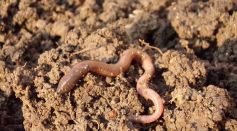Tags: Pollution
Experts Explain Why We Need to Flick the Switch On Light Pollution
Scientists Trace Microplastic Pollution Almost Everywhere, It's Become Airborne

Microplastics Found in the Antarctic Sea Ice; Pollution Harming Creatures at the Base of the Food Chain, Scientists Say

COVID-19 Patients are More Likely to Die in US Counties with Higher Levels of Air Pollution

Urban Trees Reduce Pollution and Heatwaves

Study Shows Air Pollution Can Mess With Our DNA

Plans of distributing reused drinking water to rural areas

Italy is Now Using Pasta Straws to Help Reduce Plastic Waste

Worms are Losing Weight: Food Security Risk

Ecobrick: Ingenious Way of Reusing Plastics

Poisonous Pollution Diverted Into The Ocean Through ‘Cheat Devices’ on Ships
Mental Health Issues In Children May Be Caused by Air Pollution
Chemical Companies Battle in Congressional Hearing Regarding Pollution
Greener Plastic: The Search Is On
Magnetic Coils Created To Break Down Plastics In Ocean
Microplastics are No Match for These Tiny Magnetic Coils
Minimizing Plastic Waste is a Personal Responsibility
Bottle Return Scheme May Mean Economic Stability Says Campaigners
David Attenborough: Planet Pollution May Be Likened to Environmental Slavery
Environmental Crisis in Israel May Be Getting Worse
Most Popular

Ocean Acidification, Marine pH Change, and CO2 Absorption: How Coral Reef Damage and Shellfish and Plankton Impacts Threaten Marine Life

Solar Storm Risks: How Geomagnetic Storms Threaten Earth's Power Grids and Satellites

Memory and Learning: How the Brain Stores, Retrieves, and Forgets Information

Gut Microbiome 101: How Gut Bacteria Influence Immunity, Mood, and Metabolism




